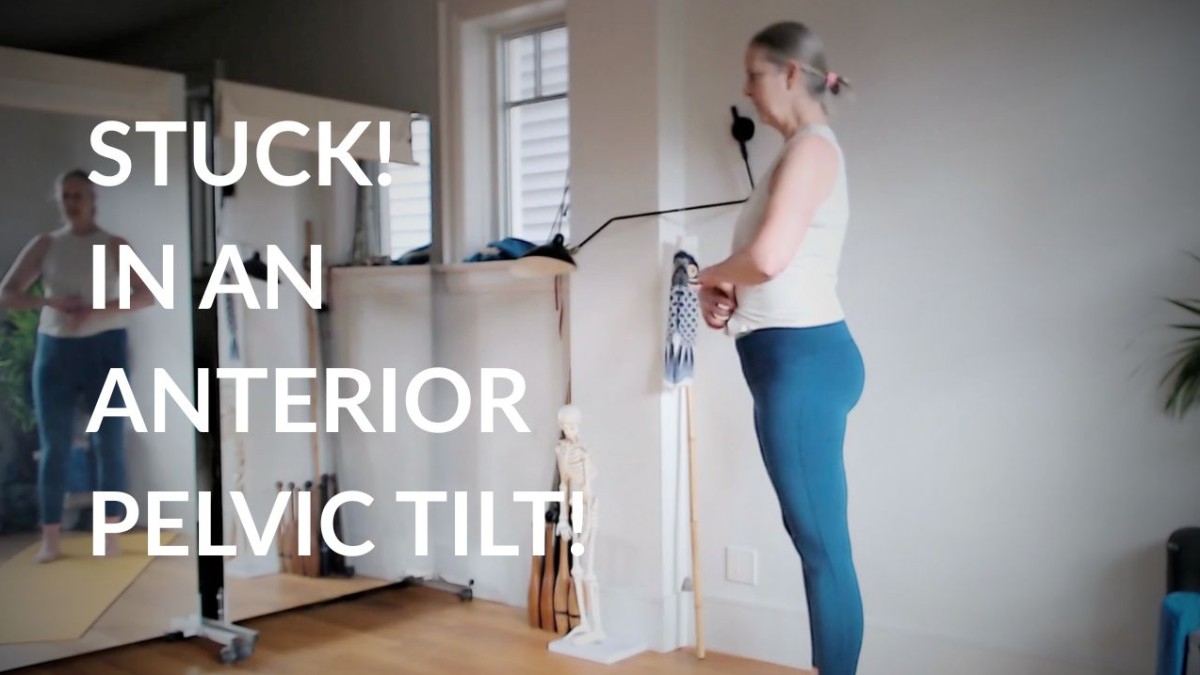Education is key when it comes to taking power over your own health and wellness.
I look at the role movement plays in your health and recovery to full and optimal function.
The articles on this site are not meant to take the place of medical advice and should not be used as such.
Are You Really in an Anterior Pelvic Tilt?

Anterior Pelvic Tilt has been blamed for a myriad of conditions from low back pain to weak abdominals. But is this really what is to blame?
I remember the time I had a well known Pilates teacher, who had consulted me for a private session, stand in front of me and swear up and down that her problems were all due to an "anterior pelvic tilt" and didn't believe me when I told her she wasn't in an anterior tilt at all! It isn't easy to persuade someone to look at the facts when their ideas are based on long held beliefs on which they've based their entire history of pain and injuries.
These beliefs aren't limited to movement teachers - I've seen dozens of people who have been told by some well meaning professional (who clearly doesn't know how to assess a pelvis) that they are in an anterior pelvic tilt.
The solution to this problem seems logical enough: posteriorly tilt the pelvis so that it's upright again. Done! Except it isn't fixed, because this solution involves a shit-ton of muscle engagement, which must be held constantly all day every day. As soon as you let the muscles relax, boom - the anterior pelvic tilt is back!
The muscle contractions involve sucking in the gut and tucking the tailbone. The main muscles involved are the abdominal wall (specifically the superficial rectus abdominus, but all the muscles get in on the action), and the gluteal (butt) and hamstring muscles to tuck the tail.
Gee, if only there was a more permanent solution that didn't involve so much constant vigilance and work, that addressed the complaints suffered by the person and didn't make them feel guilty for having this errant pelvic position and poor posture that must be held so firmly in check because they are so weak and dysfunctional. Hmmm.
In my many years of practice as a Restorative Exercise Specialist, I have assessed hundreds, and out of all those people, only one or two actually had a pelvis that was rotated anteriorly (for a definition of these terms, please see the video below). Everyone else (including me at the time) had an Anterior Pelvic Shift.
The difference is night and day and falling into this trap of believing that an anterior pelvic tilt is the cause will only cause you more grief and provides no long term solution. Once you understand the difference, you will be able to throw that bad advice out the window and start making real change. You can address the cascade of symptoms that you blamed on the Anterior Pelvic Tilt (lower back pain and compression and muscle soreness, abdominal weakness, hip, pelvic floor, hernias, digestive and elimination issues, breathing difficulties, etc., etc.,) that were probably caused by the constant sucking in of the abs, and the tucking under of the tailbone...yes, the solution that gave you short term relief could have resulted in more problems than you started with!
Watch this video and make sure you know how to assess yourself for a tilt, versus a shift. If you still aren't sure, let's talk about getting you some help - a month in the Foundations Membership includes a coaching call worth over $100 and is only $21.99.
ps - very few professionals do make this distinction between the tilt and the shift - and you likely won't get this advice from them, so arm yourself with education and make your own choices. If the information in the video seems logical, give it a try - what have you got to lose?
Categories: : Anatomy

Subscribe to the weekly "Moves-letter!"
Get the newsletter delivered to your inbox with
course and workshop news, videos, articles, and subscriber-only offers!
I have read and agree to the terms & conditions.
 Carol Robbins
Carol Robbins 
